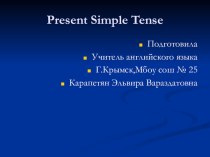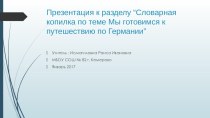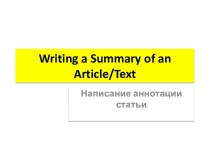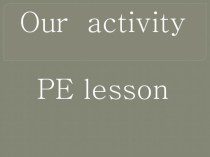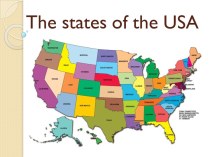- Главная
- Разное
- Бизнес и предпринимательство
- Образование
- Развлечения
- Государство
- Спорт
- Графика
- Культурология
- Еда и кулинария
- Лингвистика
- Религиоведение
- Черчение
- Физкультура
- ИЗО
- Психология
- Социология
- Английский язык
- Астрономия
- Алгебра
- Биология
- География
- Геометрия
- Детские презентации
- Информатика
- История
- Литература
- Маркетинг
- Математика
- Медицина
- Менеджмент
- Музыка
- МХК
- Немецкий язык
- ОБЖ
- Обществознание
- Окружающий мир
- Педагогика
- Русский язык
- Технология
- Физика
- Философия
- Химия
- Шаблоны, картинки для презентаций
- Экология
- Экономика
- Юриспруденция
Что такое findslide.org?
FindSlide.org - это сайт презентаций, докладов, шаблонов в формате PowerPoint.
Обратная связь
Email: Нажмите что бы посмотреть
Презентация на тему Theme: Scotland
Содержание
- 2. CONTENTS ScotlandHistory of countryThe national emblem.The capital.The national games.Big citiesFamous people.Fauna and flora of country
- 3. Why I choose Scotland? I
- 4. The aims of the presentation:Educationala/ to develop
- 5. ScotlandScotland is a very small country. It
- 6. The History of ScotlandThe recorded history of
- 8. The national emblem of Scotland is
- 10. Edinburgh is capital of Scotland.Edinburgh, capital of
- 11. Edinburgh CastleKing James Royal Milethe Palace of
- 12. The Palace of Hollyrood house.Queen Elizabeth IIIt
- 13. Inveraray Castle Inveraray Castle is the seat
- 14. The weather in Scotland doesn't differ that
- 15. Carving of a 17th-century classroom with a
- 16. Currency:Money of ScotlandThe currency in Scotland is
- 17. Highland gamesHighlands are famous for the Scottish
- 18. kiltBut what can be more peculiar and
- 19. monster NessieLock Ness is the most famous
- 20. GlasgowGlasgow is the largest city in the
- 21. Famous people of Scotland.
- 22. Alexander Graham Bell (1847-1922) was an
- 23. Robert Burns (25 January 1759 21 July
- 24. _Flora and FaunaScotland’s wildlife is typical
- 26. Скачать презентацию
- 27. Похожие презентации

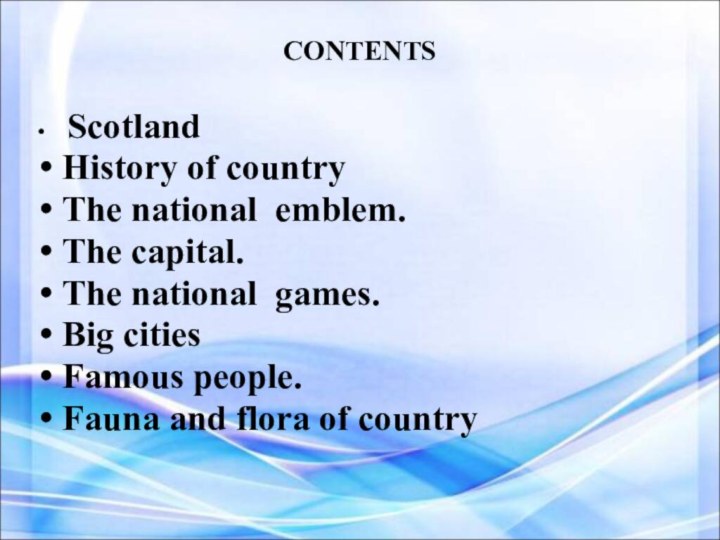


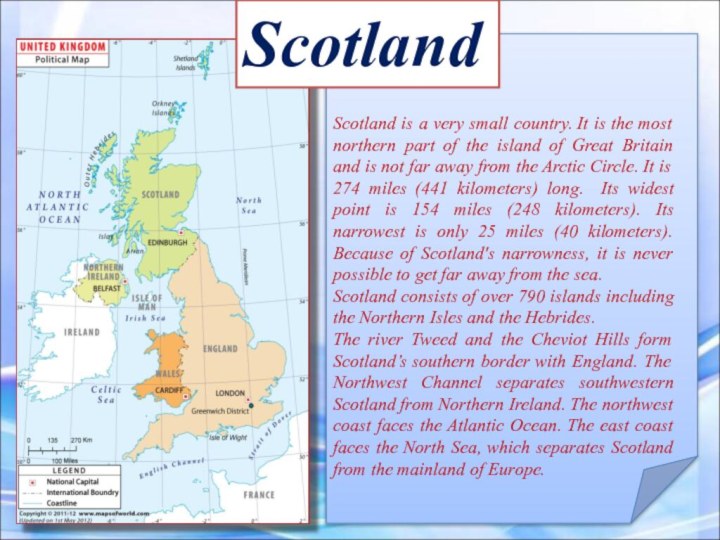



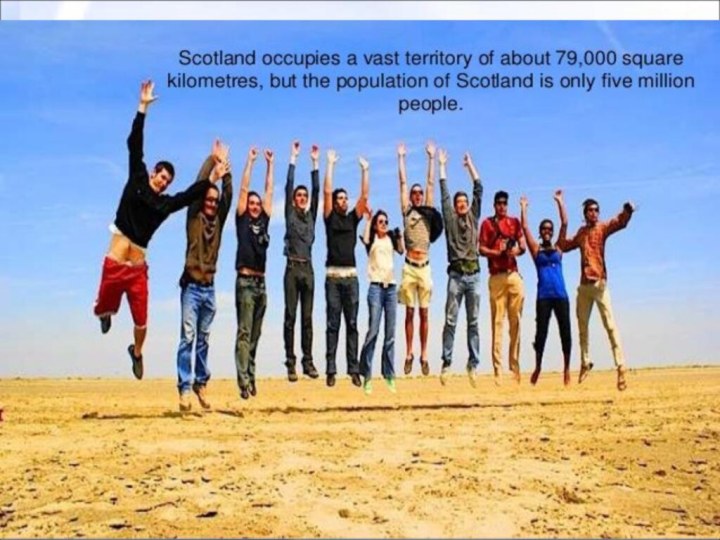









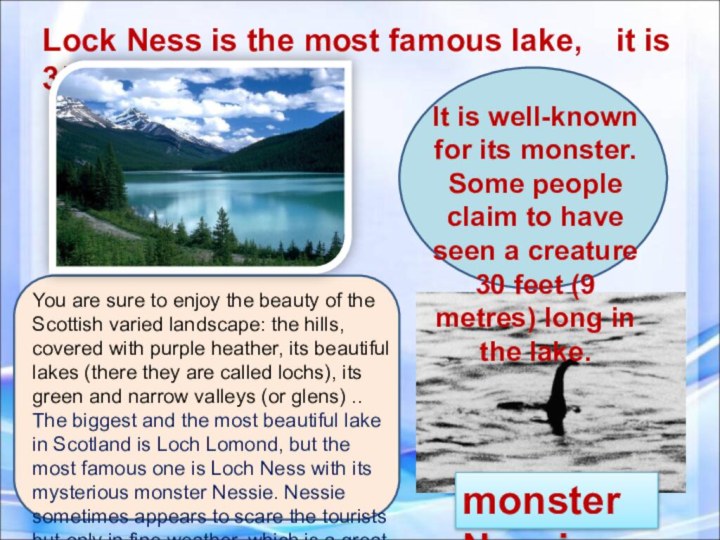




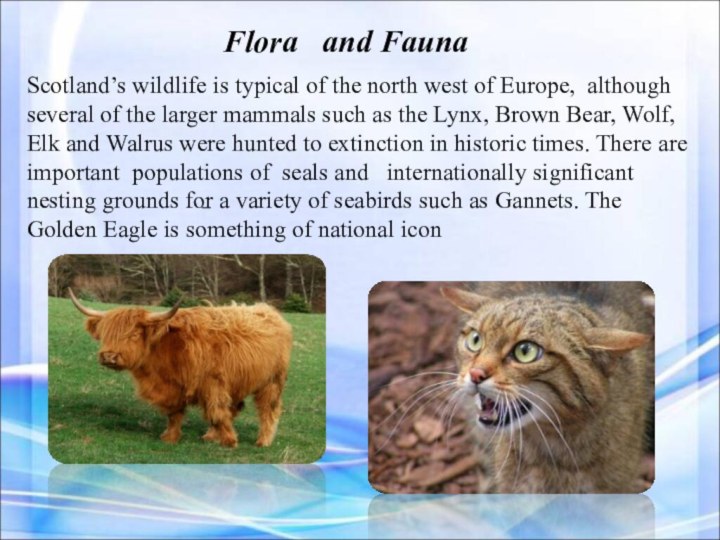


Слайд 3 Why I choose Scotland? I have read many fork
tales, magic article about castles, traditions of this country
. I think less information about this country in our school -book, that’s why I want to work this theme.
Слайд 4
The aims of the presentation:
Educational
a/ to develop knowledge
about English speaking countries ;
II. Developing
b/ To develop
speaking, listening, writing and reading, creative working habits.III. Bringing-up
c/ to bring up the feeling of love for language.
Слайд 5
Scotland
Scotland is a very small country. It is
the most northern part of the island of Great
Britain and is not far away from the Arctic Circle. It is 274 miles (441 kilometers) long. Its widest point is 154 miles (248 kilometers). Its narrowest is only 25 miles (40 kilometers). Because of Scotland's narrowness, it is never possible to get far away from the sea.Scotland consists of over 790 islands including the Northern Isles and the Hebrides.
The river Tweed and the Cheviot Hills form Scotland’s southern border with England. The Northwest Channel separates southwestern Scotland from Northern Ireland. The northwest coast faces the Atlantic Ocean. The east coast faces the North Sea, which separates Scotland from the mainland of Europe.
Слайд 6
The History of Scotland
The recorded history of Scotland
begins in the 1st century AD, when the Romans
invaded Britain. The Romans added southern Britain to their empire as the province Britannia. They were unable, however, to subdue the fierce tribes in the north. To keep these tribes from invading Britannia, Emperor Hadrian had a massive wall built across the island from sea to sea.In the 5th century Celtic immigrants from Ireland, called Scots, settled north of the Clyde. The Scots were already Christians when they left Ireland. In the next century St. Columba converted the king of the Picts to Christianity. In the 9th century Kenneth MacAlpine, king of the Scots, added the Pictish kingdom to his own. In about the 10th century the land came to be known as Scotland.
After the Normans conquered England in 1066, many Anglo-Saxons from England settled in the Lowlands of Scotland. Here the Scots gradually adopted English ways. Feudalism was established, and the chiefs of the clans became nobles. Towns grew, trade increased, and Scotland prospered.
Слайд 8
The national
emblem of Scotland is thistle.
The thistle
has been the national emblem of ScotlandThe thistle has
been the national emblem of Scotland since the reign of Alexander IIIThe thistle has been the national emblem of Scotland since the reign of Alexander III (1249–1286) and was used on silver coinsThe thistle has been the national emblem of Scotland since the reign of Alexander III (1249–1286) and was used on silver coins issued by James IIIThe thistle has been the national emblem of Scotland since the reign of Alexander III (1249–1286) and was used on silver coins issued by James III in 1470. It is the symbol of the Order of the ThistleThe thistle has been the national emblem of Scotland since the reign of Alexander III (1249–1286) and was used on silver coins issued by James III in 1470. It is the symbol of the Order of the Thistle, a high chivalric orderThe thistle has been the national emblem of Scotland since the reign of Alexander III (1249–1286) and was used on silver coins issued by James III in 1470. It is the symbol of the Order of the Thistle, a high chivalric order of ScotlandThe thistle has been the national emblem of Scotland since the reign of Alexander III (1249–1286) and was used on silver coins issued by James III in 1470. It is the symbol of the Order of the Thistle, a high chivalric order of Scotland. It is found in many Scottish symbolsThe thistle has been the national emblem of Scotland since the reign of Alexander III (1249–1286) and was used on silver coins issued by James III in 1470. It is the symbol of the Order of the Thistle, a high chivalric order of Scotland. It is found in many Scottish symbols and as the nameThe thistle has been the national emblem of Scotland since the reign of Alexander III (1249–1286) and was used on silver coins issued by James III in 1470. It is the symbol of the Order of the Thistle, a high chivalric order of Scotland. It is found in many Scottish symbols and as the name of several Scottish footballThe thistle has been the national emblem of Scotland since the reign of Alexander III (1249–1286) and was used on silver coins issued by James III in 1470. It is the symbol of the Order of the Thistle, a high chivalric order of Scotland. It is found in many Scottish symbols and as the name of several Scottish football clubs. The thistle, crowned with the Scottish crown, was the symbol of seven of the eight former Scottish Police Services (from which a new national Police Service was formed in 2013), the sole exception being the former Northern ConstabularyThe thistle has been the national emblem of Scotland since the reign of Alexander III (1249–1286) and was used on silver coins issued by James III in 1470. It is the symbol of the Order of the Thistle, a high chivalric order of Scotland. It is found in many Scottish symbols and as the name of several Scottish football clubs. The thistle, crowned with the Scottish crown, was the symbol of seven of the eight former Scottish Police Services (from which a new national Police Service was formed in 2013), the sole exception being the former Northern Constabulary. The thistle is also the emblem of Encyclopædia Britannica, which originated in Edinburgh, Scotland.
Слайд 10
Edinburgh is capital of Scotland.
Edinburgh, capital of Scotland,
is one of Britain’s most attractive cities. It’s a
city for people who like to walk. There are green parks, gardens and hills - even in the main shopping streets. It’s a busy modern city, but its history is everywhere.
Слайд 11
Edinburgh Castle
King James
Royal Mile
the Palace of Hollyroodhouse.
At
the top of the highest hill is located Edinburgh
Castle. It was the home of Scotland’s royal family until 1603 when King James the 6th of Scotland became the king of England and moved to London. The road which begins at the castle and goes eastwards is called Royal Mile. At the other end of the Royal Mile is the Palace of Hollyroodhouse.
Слайд 12
The Palace of Hollyrood house.
Queen Elizabeth II
It was
built by the Scottish king before Scotland and England
were united to make Great Britain. Now it is a second home for the Queen or her children, who usually visit Edinburgh in the summer. When the royal family is not there you can visit the palace and see a lot of interesting things.
Слайд 13
Inveraray Castle
Inveraray Castle is the seat of
the Duke of Argyll, chief of Clan Campbell. It
was commissioned in 1746, by Archibald Campbell, who had the village of Inveraray demolished and rebuilt, so it would not spoil the castles view.Glamis Castle
Glamis castle is one of the finest castles in Europe and apnot pears on the back of ten pound notes issued by the Royal Bank of Scotland.
Balmoral Castle
Balmoral Castle is one of the most visited and photographed sites in Scotland. Its history begins in 1390, when Sir William Drummond built it as a home, but it became a part of history in 1848, when Queen Victoria and Prince Albert chose it as a private royal residence.
Castles
Слайд 14 The weather in Scotland doesn't differ that much
from other areas in the UK although Scotland is
a bit more cloudy, somewhat wetter and the average temperatures are lower, especially in the (far) north. The best of the sunshine is for Ayrshire and the south-west coast, Lothians, Angus and Fife, the least for the mountains in the Highland region. The peak in sunshine hours falls in May and June and the least sunshine is for December and January.Rainfall is another key element of Scottish weather although it is not as bad as people sometimes tell you.
The winds favourite direction is from the south-west and strong winds occur more often and are the strongest in the Western Isles and the north-west coast .
January and February are the coldest months with an average of around 5 to 7 °C. The summermonths have an average of about 19 Degr. C. The annual mean temperature on Ben Nevis (1344m) is -0,3C. Snowfall occurs on less than 20 days near the west-coast to more than 100 days in the Cairngorm Mountains mainly in the months December to March.
Climate of the country
Слайд 15 Carving of a 17th-century classroom with a dominie
and his ten scholars from George Heriot's School, Edinburgh.
The
history of education in Scotland in its modern sense of organised and institutional learning, began in the Middle Ages, with the education of boys based around Church choir schools and grammar schools in its modern sense of organised and institutional learning, began in the Middle Ages, with the education of boys based around Church choir schools and grammar schools. By the end of the 15th century schools were also being organised for girls and universities were founded at St Andrews in its modern sense of organised and institutional learning, began in the Middle Ages, with the education of boys based around Church choir schools and grammar schools. By the end of the 15th century schools were also being organised for girls and universities were founded at St Andrews, Glasgow in its modern sense of organised and institutional learning, began in the Middle Ages, with the education of boys based around Church choir schools and grammar schools. By the end of the 15th century schools were also being organised for girls and universities were founded at St Andrews, Glasgow and Aberdeen in its modern sense of organised and institutional learning, began in the Middle Ages, with the education of boys based around Church choir schools and grammar schools. By the end of the 15th century schools were also being organised for girls and universities were founded at St Andrews, Glasgow and Aberdeen. Education was encouraged by the Education Act 1496, which made it compulsory for the sons of barons and freeholders of substance to attend the grammar schools, which in turn helped increase literacy among the upper classes. Scotland has a long history of universal public education. Its education system is distinctly different from other parts of the United Kingdom. Traditionally, the Scottish system has emphasised breadth across a range of subjects, while the English, Welsh and Northern Irish systems have emphasised greater depth of education over a smaller range of subjects at secondary school level. EDUCATION OF SCOTLAND
Слайд 16
Currency:
Money of Scotland
The currency in Scotland is not
different from the rest of the United Kingdom in
that it is also consists of British Pounds (£), although Scottish banks print their own versions. These "Scottish notes" are widely accepted throughout the United Kingdom, although cases have been reported of a few shops outside Scotland refusing them (check out this discussion about scottish money).
Слайд 17
Highland games
Highlands are famous for the Scottish Olympics
or the Highland games (it’s real name). These games
are not only sporting competitions: music and different traditional games are very important too.Holidays and festivities.
January 1 New Year’s Day
January 2 Bank Holidays
January 25 Burns Night
April 10 Good Friday
April 13 Ester Monday
August 1 Lammas.
October 31 Hollowen.
November 11 Martinmas and
Remembrance Day
November 30 St Andrew’s Day
December 25 Christmas Day
December 31 Hogmanay
Слайд 18
kilt
But what can be more peculiar and attractive
for tourists than a man in the kilt, playing
the bagpipes? The Celts of Scotland made the chequered pattern of tartan the national dress of the country. The earliest Scots formed themselves into clans (family groups) and the tartan became a symbol of the sense of kinship. There are about 300 different clans in Scotland, and each has its own colour and pattern of tartan together with the motto.
Слайд 19
monster Nessie
Lock Ness is the most famous lake,
it is 35 kilometers long.
You are sure to
enjoy the beauty of the Scottish varied landscape: the hills, covered with purple heather, its beautiful lakes (there they are called lochs), its green and narrow valleys (or glens) ..The biggest and the most beautiful lake in Scotland is Loch Lomond, but the most famous one is Loch Ness with its mysterious monster Nessie. Nessie sometimes appears to scare the tourists but only in fine weather, which is a great rarity for Scotland!
It is well-known for its monster. Some people claim to have seen a creature 30 feet (9 metres) long in the lake.
Слайд 20
Glasgow
Glasgow is the largest city in the country
and the main industrial center. Scottish towns look very
different from English towns.Dundee
.
Dundee officially the City of Dundee, is the fourth-largest city in Scotland. It lies within the eastern central Lowlands on the north bank of the Firth of Tay, which feeds into the North Sea. Under the name of Dundee City, it forms one of the 32 council areas used for local government in Scotland.
Слайд 22 Alexander Graham Bell (1847-1922) was an eminent
scientist, inventor, engineer and innovator who is credited with
inventing the first practical telephone. He became one of the founding members of the National Geographic Society.Arthur Conan Doyle (1859-1930) was a medical doctor and writer, author of the world-famous detective Sherlock Holmes. His other works include science fiction stories, plays, romances, poetry, non-fiction, historical novels and humours.
Alexander Fleming (1881-1955) was awarded the Nobel Prize in Physiology or Medicine in 1945 for his discovery of penicillin, considered the most efficacious life-saving drug in the world. Penicillin would change forever the treatment of bacterial infections and save millions of lives. He was voted by Time magazine one of the 100 Most Important People of the 20th Century. Fleming was a native of Lochfield, Ayrshire.











